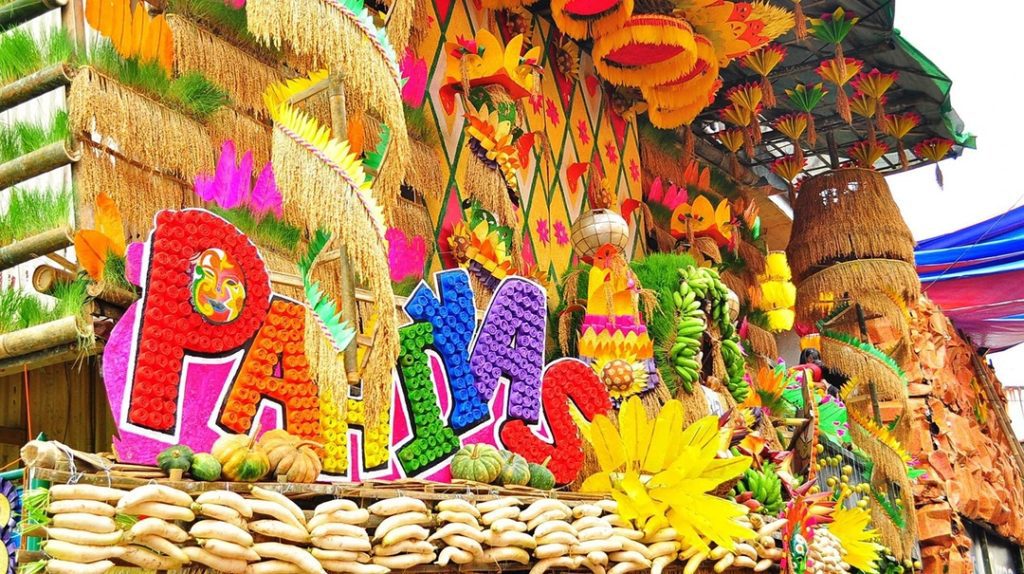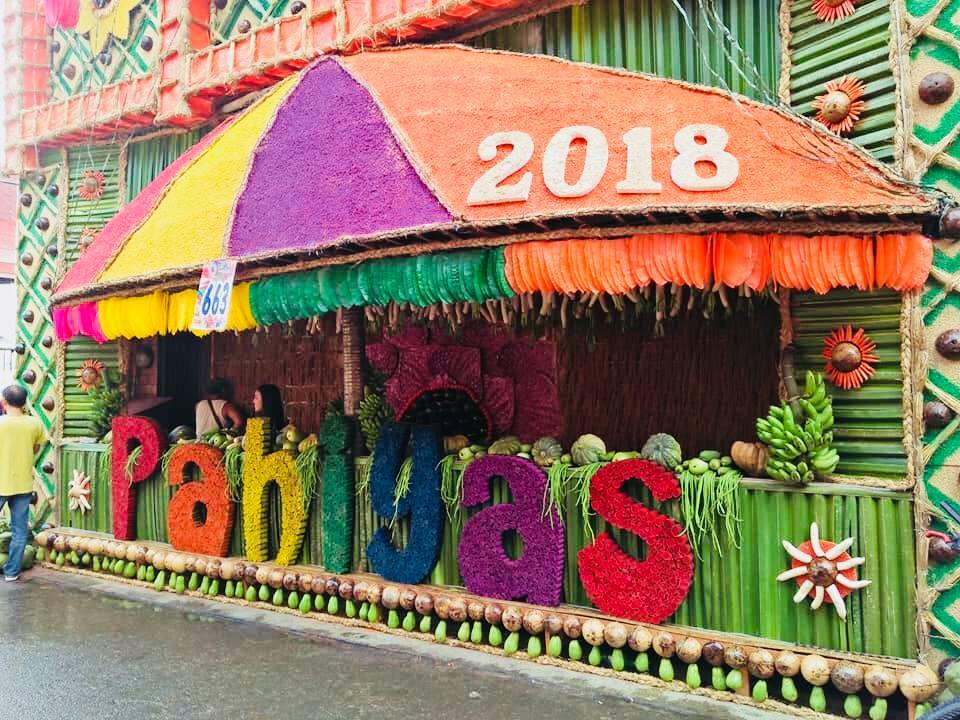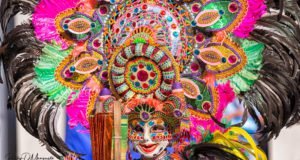Pahiyas Festival: A Farmer’s Thanksgiving in Lucban | Travel Guide and Schedule of Activities
Every year, on the 15th of May, the town of Lucban in the province of Quezon, Philippines, bursts into a spectacle of color and life, thanks to the Pahiyas Festival. This vibrant event is far from your ordinary town fair; it’s a grand, deeply-rooted tradition of the farmers offering their thanks for a bountiful harvest. The name ‘Pahiyas’ itself translates to ‘decorations’ or ‘precious offering,’ perfectly capturing the essence of this Thanksgiving festival.
The Historical Background and Place of Origin of Pahiyas Festival
Delving into the history of the Pahiyas Festival brings us back to the time of Spanish colonization. The festival is deeply intertwined with the veneration of San Isidro Labrador, the patron saint of farmers, and his wife, Santa Maria de la Cabeza. As legend has it, whenever their well ran dry during times of drought, the couple would simply pray, and the well would overflow. This miracle quenched not only their own fields but also the neighboring ones.
Filipino farmers, especially in Lucban, took to this story, seeing parallels in their own lives. They sought the intercession of San Isidro Labrador for a bountiful harvest and protection from natural calamities. Over time, the annual commemoration transformed into the present-day Pahiyas Festival, combining both faith and gratitude in a dazzling display of colors.”
The Pahiyas Festival originated in the town of Lucban, in the province of Quezon, Philippines. It started as a simple rural feast organized by farmers to honor San Isidro Labrador, their patron saint. Over time, this modest thanksgiving evolved into one of the most colorful and widely attended festivals in the country, while still retaining its authentic rural charm and deeply rooted cultural significance.
The Cultural Significance of Pahiyas Festival
In the heart of the Pahiyas Festival, beyond the visual appeal, lies a deep sense of community and shared identity. The festival reflects the enduring Filipino values of gratitude, camaraderie, resilience, and creativity.
Farmers, not usually in the limelight, become the stars of the Pahiyas Festival. Their Thanksgiving isn’t just a private affair; it’s a communal celebration. Each household takes part in creating unique, intricate decorations using their harvest. The spirit of friendly competition adds to the festival’s excitement, with homes vying for the title of ‘best in décor.’
Beyond the visual spectacle and celebration of the harvest, the Pahiyas Festival is a manifestation of cultural identity. An important part of this identity is the festival costume. Participants and even some spectators dress in traditional Filipino attire, known as Barong Tagalog for men and Baro’t Saya for women. These costumes, made from indigenous materials and decorated with local designs, add another layer of cultural richness to the Pahiyas Festival.
The Role of Agriculture in the Pahiyas Festival
Agriculture plays a pivotal role in the Pahiyas Festival. Lucban’s farming landscape is diverse, boasting rice, vegetables, and fruits, which all find their way into the festival décor. But the event doesn’t just display these products; it transforms them into art.
Each house becomes a canvas, showcasing agricultural produce in the most creative ways. From rice grains forming intricate patterns to vegetable-adorned arches, the Pahiyas Festival is a unique intersection of agriculture and art. The sight of such vibrant displays against the backdrop of the rustic town of Lucban further emphasizes the festival’s connection to nature and the local terrain.
Understanding Pahiyas Festival’s Iconic Decorations
Among the numerous decorations seen in the Pahiyas Festival, one stands out in its uniqueness – the ‘Kiping.’ These are brightly colored, leaf-shaped rice wafers used to create larger designs, such as chandeliers, flowers, or sunbursts. Kiping, in all its colorful glory, has become synonymous with the Pahiyas Festival.
Making Kiping is an art in itself. It involves making a batter from ground rice, coloring it, and then brushing it onto a leaf-shaped mold. After drying, the Kiping is carefully peeled off and stored until the festival. It’s not just an ornament, either. After the festivities, Kiping can be fried and eaten, making the decorations of the Pahiyas Festival not just beautiful but also sustainable and waste-free.
Other elements often seen in Pahiyas Festival decorations include:
- Fruits and vegetables: Arrays of colorful and fresh produce are used in creative ways, hanging from windows or creating cascading displays.
- Rice, grains, and seeds: These are often used to make murals or intricate patterns on the façade of the houses.
- Handicrafts: Locally made items, like hats, baskets, or mats, add a distinct Filipino touch to the décor.
Travel Guide to Pahiyas Festival
Whether you’re a local reveler or an international traveler looking to experience the Pahiyas Festival, planning is key to enjoying this event. Here’s a comprehensive travel guide to ensure a smooth and memorable experience at the Pahiyas Festival:
Best Time to Visit and How to Get There
The festival takes place on May 15th each year. While the decorations start appearing a few days before, the grandest displays are typically on the festival day itself. Arriving a day or two in advance would give you a chance to see the town prepare and be a part of the pre-festival buzz.
Lucban, the host of the Pahiyas Festival, is around 160 km southeast of Manila. You can get there by bus or private car. If you’re taking a bus, there are regular services from Manila to Lucban. The trip can take up to four hours, depending on traffic.
Where to Stay
While Lucban is often visited as a day trip from Manila, staying overnight can give you a fuller experience of the Pahiyas Festival. Accommodation options include:
- B&Bs and Guesthouses: You’ll find numerous cozy and affordable options around town.
- Resorts and Hotels: If you prefer a bit more comfort, there are several resorts and hotels within a short drive from Lucban.
Remember to book in advance, as accommodations tend to fill up quickly around the festival.
Essential Tips for Enjoying the Pahiyas Festival
- Dress comfortably and be prepared for the weather. May is typically hot in the Philippines, but sudden rain showers can occur.
- Bring a good camera. The vibrant decorations of the Pahiyas Festival are truly a photographer’s delight.
- Be respectful. Remember that while the Pahiyas Festival is a grand spectacle, it’s also a religious event and a personal thanksgiving for the locals.
Must-Try Local Delicacies and Where to Find Them
Lucban is also known for its culinary scene. During the Pahiyas Festival, make sure to try the following:
- Pancit Habhab: A local noodle dish served on a banana leaf and eaten without utensils.
- Lucban Longganisa: A local variant of the Philippine sausage known for its garlicky and slightly sour taste.
- Hardinera: A festive meatloaf dish served in a llanera (oval-shaped tin pan), it’s a unique and tasty treat.
Suggested Itinerary and Schedule for the Festival
- Morning: Start early by attending the procession in honor of San Isidro Labrador. Then, walk around the town to marvel at the beautifully decorated houses.
- Afternoon: Participate in or watch local games and activities. Don’t forget to sample the local delicacies.
- Evening: Join in the merriment as the day ends with live music and performances.
- May 13th-14th: These days are usually filled with several activities like art exhibitions, cultural shows, and local markets selling local products and delicacies. You can also observe locals preparing their homes with the vibrant decorations.
- May 15th: This is the main day of the Pahiyas Festival. The day usually starts with a morning Mass and procession in honor of San Isidro Labrador. Afterward, you can spend the day admiring the beautifully decorated houses. In the afternoon, the local government usually organizes games, contests, and live performances. As evening falls, the street parties and live music performances light up the town.
- May 16th: This is the day of reflection and clean-up. You can use this day to visit other attractions in and around Lucban.
Health and Safety Tips
With large crowds expected during the Pahiyas Festival, remember to prioritize your health and safety:
- Stay hydrated and use sun protection.
- Keep your belongings secure.
- Follow any existing COVID-19 protocols or guidelines.
The Impact of Pahiyas Festival on the Local Community
The Pahiyas Festival significantly impacts the local community of Lucban. From an economic perspective, the influx of tourists boosts local businesses, especially those in the food, hospitality, and handicraft sectors. The festival also gives farmers and local artisans a platform to showcase their products in creative ways, enhancing their visibility and promoting their work.
Moreover, the Pahiyas Festival reinforces a sense of community spirit and pride. The collective effort put into preparing for the festival, from creating decorations to organizing events, fosters unity and cooperation among the locals. And when the day comes, the result is a shared joy that extends beyond Lucban and captures the hearts of visitors from far and wide.
The Pahiyas Festival, with its vibrant colors, unique traditions, and infectious energy, is a testament to the Filipino spirit of thanksgiving, resilience, and creativity. It’s a celebration that goes beyond the physical beauty of the decorations, deeply rooted in faith, agriculture, and community. This festival not only brings joy and economic benefits to the locals but also leaves a lasting impression on every visitor, inviting them to participate in the communal thanksgiving of the hardworking farmers of Lucban.
So, whether you’re looking for a cultural adventure, a visual feast, or a heartwarming community experience, the Pahiyas Festival is definitely an event to add to your bucket list.





















